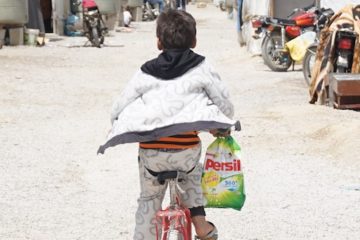June 11, 2014
According to the UN, the Syrian crisis is the worst humanitarian catastrophe witnessed by humanity in the past 25 years, and the worst crisis in our times. The number of people affected by the Syrian crisis exceeds those affected by the Pacific Ocean Tsunami, Hurricane Katrina and the Rwandan Genocide combined.
What started as peaceful demonstrations in March 2011 was transformed into an ugly armed conflict and civil war. The results have been mayhem and the destruction of cities, villages, neighborhoods, hospitals, infrastructure, and landmarks. The conflict has resulted in the killing of tens of thousands of people, an untold number of disabled civilians, detention and torture of tens of thousands of people, and the displacement of at least 9.5 million civilians, 75% of whom are women and children.
Human rights organizations and the UN have documented unprecedented crimes against humanity and war crimes, including the use of rape as a weapon, use of prohibited chemical weapons, use of siege to starve populations, and the targeting of healthcare professionals, patients, hospitals, and ambulances.
The ongoing armed conflict in Syria has entered its 4th year, unabated. It is estimated that more than 150,000 people have been killed, among them12, 000 children. More than 11,000 prisoners have died from torture, and at least1400 people have suffocated to death due to exposure to Sarin and other internationally prohibited chemical agents.
According to the United Nations Office of Coordination of Humanitarian Affairs (UNOCHA), more than 9.5 million Syrians, or close to half of the population, are in need of assistance, and that number is increasing daily. According to UNICEF, 5.5 million children have been affected by the crisis, among whom 1.5 million have become refugees, and another 4 million have been internally displaced. About 5 million children are growing up without consistent education, creating Syria’s lost generation. As of the writing of this report, according to UNHCR, more than 2.8 million Syrians are registered as refugees in neighboring countries. At least 6.5 million have been internally displaced at a startling rate of 9500 displaced persons every month. Among refugees, 65% have psychological trauma. In Lebanon, 1 out of 4 people is a Syrian refugee, while Al-Zaatari Camp is now the fifth largest city in Jordan, and the second largest refugee camp in the world. This year, Syria will replace Afghanistan as the nation with highest refugee population in the world.




